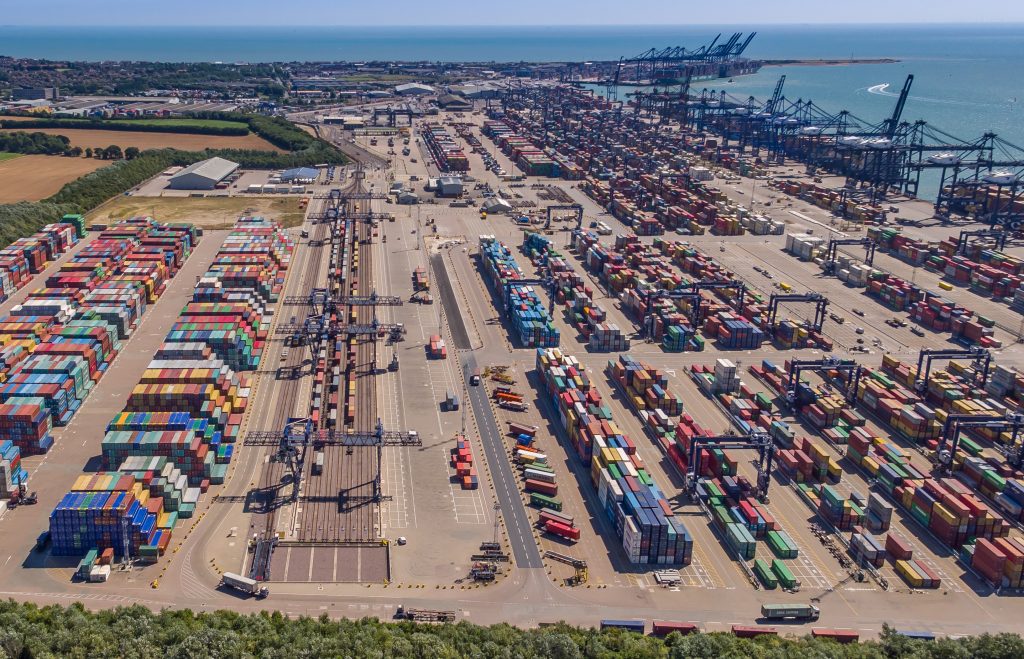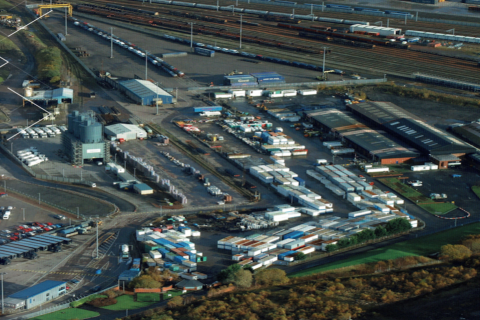Containers pile up at UK’s ports due to Brexit and pandemic

Post-Brexit trade disruption and ongoing congestion are causing critical build-ups of containers at UK ports, according to the latest data from Container xChange. The UK’s leading container terminals struggled to cope with the pandemic driven surge of imports last year, and this has only worsened with Brexit, the company argues. Shipping lines now opt for the more northern ports, avoiding congestion at Channel Tunnel.
Since the UK departed the European Union on 1 January 2021 and started trading under a post-Brexit customs and regulatory regime, shipping lines have diversified their routings. Trade between the UK and the EU has not stopped, but with reluctance among freight operators to risk delays, many loads are being redirected to less congested parts of Great Britain.
Situation worsened at ports
Although one can see the opportunities for rail in meeting the increased transport demand of those ports, the situation in these ports today is problematic, according to Container xChange. Whereas these ports already faced an excess of containers due to the pandemic, the situation has now worsened.
“Under Container xChange’s Container Availability Index (CAx), an index reading of 0.5 describes a balanced market. Below 0.5 means there is a shortage of containers. Above 0.5 means there is an excess of containers. At the port of Felixstowe the average reading of the CAx so far in 2021 for a 40 ft container is 0.95, up from 0.79 in 2020. The CAx for a 20 ft box has increased from an average of 0.78 in 2020 to 0.90 this year”, the company explains.
“A similar picture is apparent at the port of Southampton where the CAx reading for a 40 ft container is 0.86 in 2021, up from an average of 0.71 last year. For a 20 ft container the CAx reading is 0.85, up from an average of 0.72 in 2020.”
Not so bad at all for rail
If you ask Maggie Simpson, director of the Rail Freight Group that represents the sector in the UK, this is not necessarily a bad thing for rail freight. For one because these ports have a good railway network to provide with the needed hinterland transport solutions. But also because there has been interest among shippers to shift their cargo to rail via the Channel Tunnel.
For rail freight, the situation at the Channel Tunnel is really problematic. “There have not been reports of congestion for freight trains, so this is an interesting alternative for shippers now moving their goods via truck or sea.” Moreover, trade has moved on, she acknowledges. “There has not been a major shift or stop of trade, as far as I observed.”
Problems started in 2020
“The UK’s leading gateway terminals for container traffic suffered congestion for much of 2020 prompting carriers to cut some calls and ship cargo in from European hubs via the Channel Tunnel, ferry services and feeder services instead,” said Dr. Johannes Schlingmeier, CEO of Container xChange.
According to Container xChange, European gateway ports have also suffered disruptions and delays due to pandemic driven container traffic surges. However, container availability at leading hubs is currently better balanced than in the UK.
“At the port of Rotterdam, the CAx average reading for a 40 ft container this year is 0.51, compared to an average of 0.40 in 2020. At Antwerp, shortages have been a problem, with an average reading for a 40 ft container of 0.21 in 2020 improving to a more balanced 0.41 this year.
Opportunities for rail
With increased demand for facilities at ports in the UK away from the Channel, and for sailings directly to Ireland, there are opportunities for rail freight operators to handle more traffic, particularly displaced intermodal flows, and move those loads on to inland distribution hubs. That could be good news for UK ports with rail facilities already in place, and may also spark a revival in Irish intermodal traffic.
As Simpson concluded in RailFreight Live last Friday, trade routes are likely to be affected long term by Brexit concerns, and port routes avoiding the Channel were likely to be permanent beneficiaries. This is something that rail freight companies could tap into as well.
Also read:
- Network Rail’s Charlene Wallace: ‘We need to be a voice for the future’
- New Brexit beating routes could benefit rail freight
You just read one of our premium articles free of charge
Want full access? Take advantage of our exclusive offer





